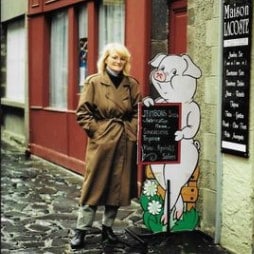
Home » The Bubble: Stopping the Decline

We have been seeing the decreasing number of show entries across the United States for the past several years. The drop in AKC registrations in too many breeds has raised concerns in the community, and the need to encourage newcomers to join the show dog world has become a hot topic for discussion. The one thing we have been skating around is the topic of breeding, caught between the idea that breeding needs to be controlled and what we need. Without breeding, there would be no show dogs, no dog show magazines, and there would be no dog show community. It is the rock upon which everything else must be based.
In the March issue of SHOWSIGHT, Allan Reznik discussed this very topic in his column and commented that more good breeders should be breeding litters. The problem is that for the past 20 or 30 years, breeders have been actively discouraged, and that includes both experienced and knowledgeable people and newcomers alike. Too many people jumped on the purity bandwagon that good breeders did NOT breed more than occasionally. In his column, he quoted a lady who had been pressured into breeding a lovely female, but she had been told that responsible breeders have a litter when they plan to keep a puppy, which she had no intention of doing, and thus would not be breeding. In my own breed, the concept was more limiting. The definition was that a responsible breeder would *only* have a litter to replace the current show dog! Having a single litter or more in a year has been declared by some as unacceptable.
Animal rights groups had started their anti-breeder campaign in the 1980s beginning with the substandard and unregulated commercial establishments, but all other breeders were just collateral damage until they officially tried to throw us all under the same bus using federal legislation. Twenty years ago, the dog show community woke up and started fighting back, and I was hoping that the upcoming generation of breeders would see the light. Sadly, there were still too many people of influence parroting the AR inspired rhetoric, that breeding was “bad.” Since then, local licensing laws and zoning regulations have made it doubly hard for anyone who wants to breed even a single litter. There needs to be cooperation between those who would like to breed a litter and those who can, without condemnation.
For intending breeders who have not yet made the plunge into the world of breeding, the most important thing for them to think about is the infrastructure—and how and where they will house any litters from birth. My puppies have always been born in the house, but Afghan Hound puppies are very active and athletic, and keeping a whole litter in the kitchen or living room as suggested by a well-known writer just does not work! It is essential to have a workable option, whether that is converting an attached garage or a walk-out basement, or having a dedicated building attached to the house which allows the young and growing litter to have access to fresh air and sunshine—and still get personal attention. It is a myth that unless they are in the house proper they will be ignored and unsocialized; that depends on who is taking care of them!
Not everyone has this available to them, and as Allan suggested, intending breeders need to have a game plan with a breeder or mentor who is willing to help. I was able to do that when friends had a litter that was larger than they’d expected. The dam had already had a litter of three, and the sire was up there in age, so they did not expect any more than that… but she had nine! They were not set up for it, so the puppies came to me at nine weeks of age. I had the space and worked from home, so was able to spend time with them. There are so many ways things can be arranged for everyone’s benefit. If not, no, that person should not breed the litter.
One thing that has alarmed me is the amount of conflicting information that will be thrust on those who are new to breeding dogs, with worst-case scenarios presented at every turn as being inevitable. People ask questions online and the keyboard warriors jump in with “You MUST” and “Must NOT!” suggestions, without knowing if they have any relevance to the breed in question. This drives people into reactionary positions, and some may be discouraged from breeding for no good reason.
We see a lot of talk about breeds losing or lacking genetic diversity within a breed, with some people suggesting that purebred gene pools are doomed. Yes, some are in dire straits, but that does not mean the end of the line unless every avenue has been explored and comes up wanting. It does mean that breeders may need to be more willing to share what they have or stop telling others never to breed to anything from a named pedigree. Yes, my elders and betters gave me their sage—and prejudiced—advice when I was an eager novice. It took me years to realize that it was just competitive jealousy, not wanting to see puppies being shown sired by a competitor’s dog. It goes on today. If we want to preserve our breeds, we need to ensure that new generations of carefully bred puppies are born, and encourage some of their owners to go to a few shows—even breed a litter in the future. I can hear the screams now at the idea, but that was how the dog show world was born to begin with!
If we want to preserve our breeds, we need to ensure that new generations of carefully bred puppies are born, and encourage some of their owners to go to a few shows—even breed a litter in the future.
I hope I have given you some food for thought. The decline needs to stop, and we need to plan for a steady recovery for all of our breeds. We do not want instant popularity for any of them, but we do need to figure out how to develop sane and stable populations for all breeds with less interest in the Top 10 most popular or the most rare. Both are bad, but too few is worse, as that is when too much has been lost and recovery may not be possible.
